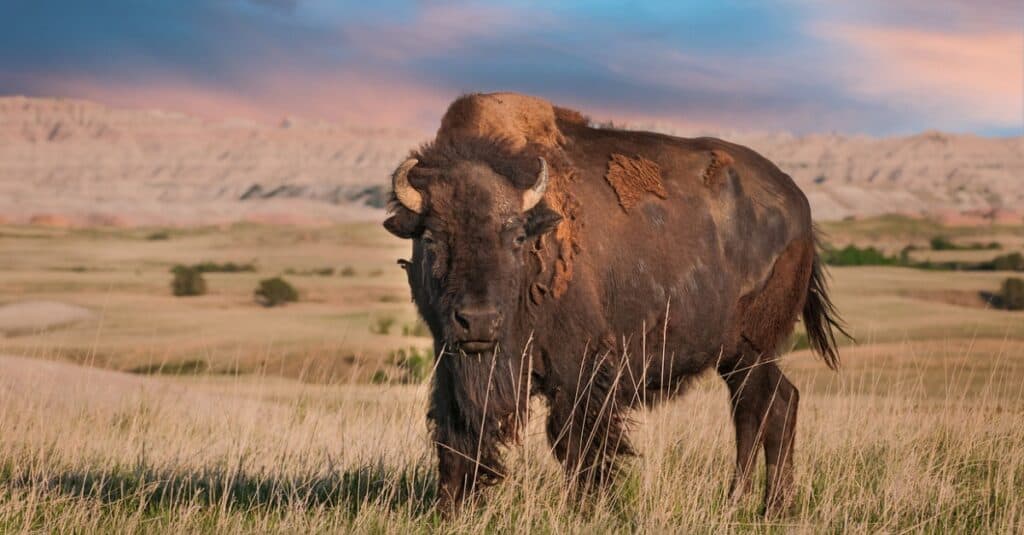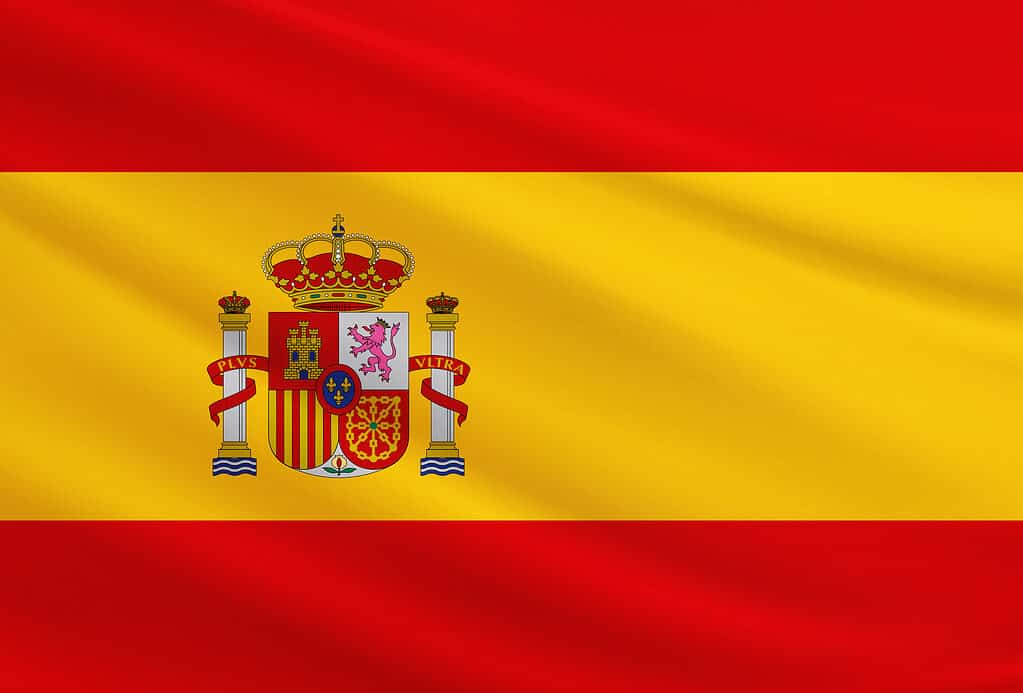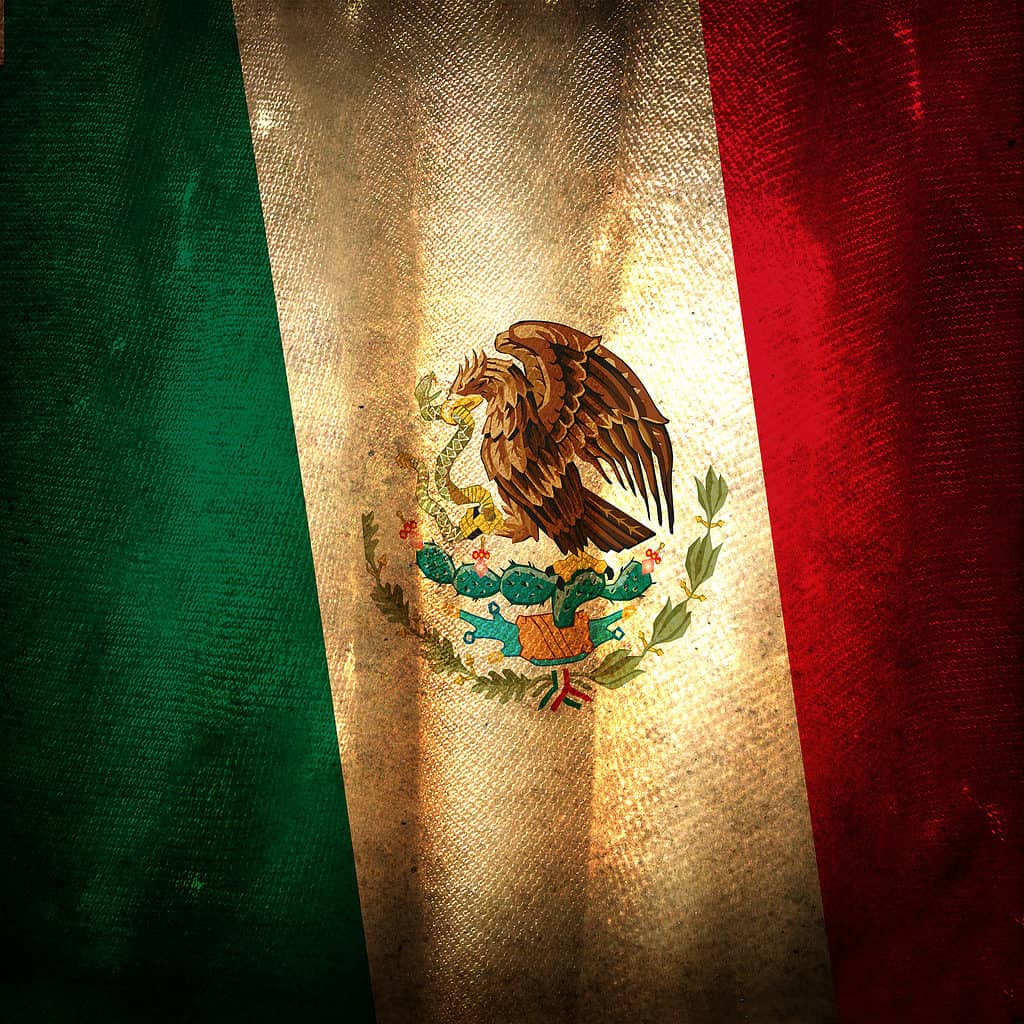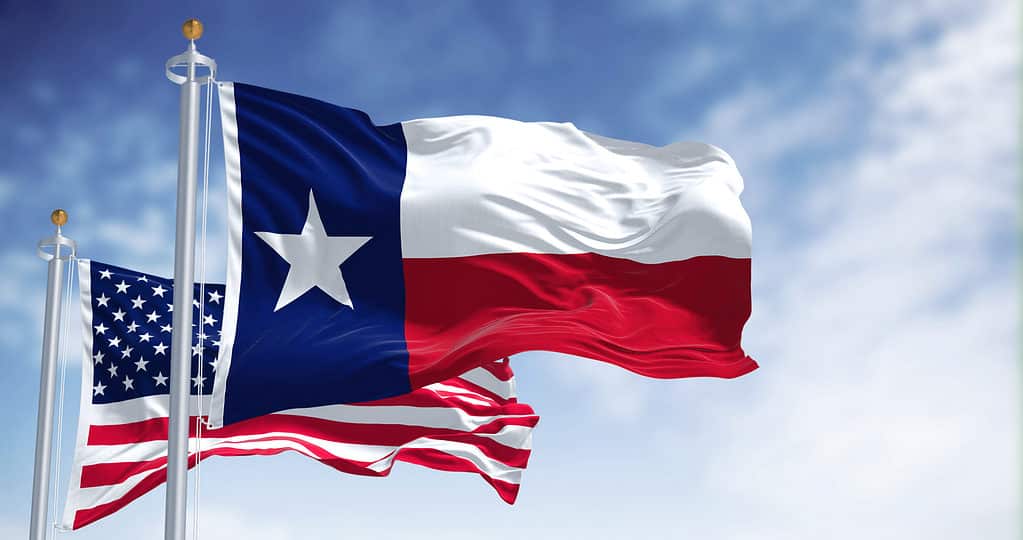So, how did Texas get its name?
History of Texas
Indigenous People

Plains people, like the Apache, hunted bison in the Texan grasslands.
©Geoffrey Kuchera/Shutterstock.com
The history of Indigenous peoples in present-day Texas stretches back thousands of years. Prior to European contact, various Native American tribes inhabited the region, including the Apache, Comanche, Caddo, Karankawa, and many others. These tribes had diverse cultures, languages, and social structures. They relied on hunting, gathering, and agriculture to sustain their communities.
The arrival of Spanish explorers in the 16th century marks the beginning of significant changes for the Indigenous peoples in Texas. Spanish missionaries established missions in the area, aiming to convert the Native American populations to Catholicism. Their goal was to assimilate them into Spanish colonial society. The impact of colonization was complex, as it brought both conflict and cultural exchange. Many Indigenous communities were decimated by diseases introduced by the Europeans, while others experienced forced labor and displacement.
Colonization

Spanish colonizers were the first Europeans to control modern day Texas.
©Osman Bugra Nuvasil/Shutterstock.com
The colonization history of Texas begins in the Spanish and Mexican periods of rule, as well as the subsequent Anglo-American settlement. In the 16th century, Spanish explorers, most notably led by Alonso Álvarez de Pineda, began to explore and claim the territory of Texas for Spain. Spanish missionaries followed, converting Native American populations to Catholicism. These efforts were accompanied by the establishment of presidios, or military garrisons, to protect the Spanish interests in the area.

After gaining independence from Spain, Mexico controlled what is now Texas.
©Wi_stock/Shutterstock.com
In the early 19th century, Texas was part of the Viceroyalty of New Spain under Spanish rule. In 1821, however, Mexico gained independence from Spain, leading to the establishment of Mexican rule over Texas. Mexican authorities sought to encourage colonization in the region, allowing Anglo-American settlers, known as empresarios, to bring in settlers and establish colonies. One of the most notable empresarios was Stephen F. Austin, who brought a significant number of Anglo settlers to Texas.

Texas eventually became the 28th state in the United States in 1845.
©iStock.com/rarrarorro
Tensions between the Mexican government and Anglo settlers eventually led to the Texas Revolution in 1835, culminating in the Battle of San Jacinto in 1836 and the establishment of the independent Republic of Texas. The republic existed for almost a decade before it joined the United States as the 28th state in 1845. The colonization of Texas by Anglo-Americans had a profound impact on the region, leading to conflicts with Native American tribes, changes in land ownership, and the establishment of a predominantly Anglo-American society that persists to this day. The colonization history of Texas reflects a complex interplay between Spanish, Mexican, and Anglo-American influences, shaping the cultural, political, and social landscape of the state.
How Did Texas Get Its Name?
The Meaning of Texas’s Name
The name “Texas” derives from the Caddo word “tejas” or “taysha,” which means “friends” or “allies.” The Spanish explorers encountered this term when they arrived in the region and used it to refer to the Native American groups they encountered. Over time, “tejas” evolved into “Texas” and became associated with the vast territory that encompasses the present-day state. The name “Texas” reflects the historical presence and interactions between Native American tribes and European explorers and settlers in the region. It carries the connotation of friendship and alliances, symbolizing the diverse cultural heritage and interconnectedness of different communities that have shaped the history of Texas.
The History of Texas’s Name

Texas is now the largest state in the contiguous United States.
©Janece Flippo/Shutterstock.com
The name “Texas” has its roots in the Spanish colonial period. The Spanish explorer Alonso Álvarez de Pineda was likely the first European to map and explore the Texas Gulf Coast in 1519. Inspired by the native Caddo word “tejas” or “taysha,” meaning “friends” or “allies,” Spanish settlers began using the term to refer to the region and its Indigenous inhabitants.
The specific origins of the name “Texas” are somewhat unclear. Some historians suggest that it might come from the Spanish word “tejas” itself. Others propose that it could have come from the word “teyxas,” meaning “hello” or “friendship” in the Coahuiltecan language.
Texas got its name during the period of Spanish colonial rule in the early 18th century. The exact year when the name “Texas” was officially used is not precisely documented. It was possibly in use by the late 17th century, though. The name “Texas” appeared on maps and documents during the Spanish exploration and settlement of the region.
The photo featured at the top of this post is © Salah Ait Mokhtar/Shutterstock.com
Thank you for reading! Have some feedback for us? Contact the AZ Animals editorial team.







